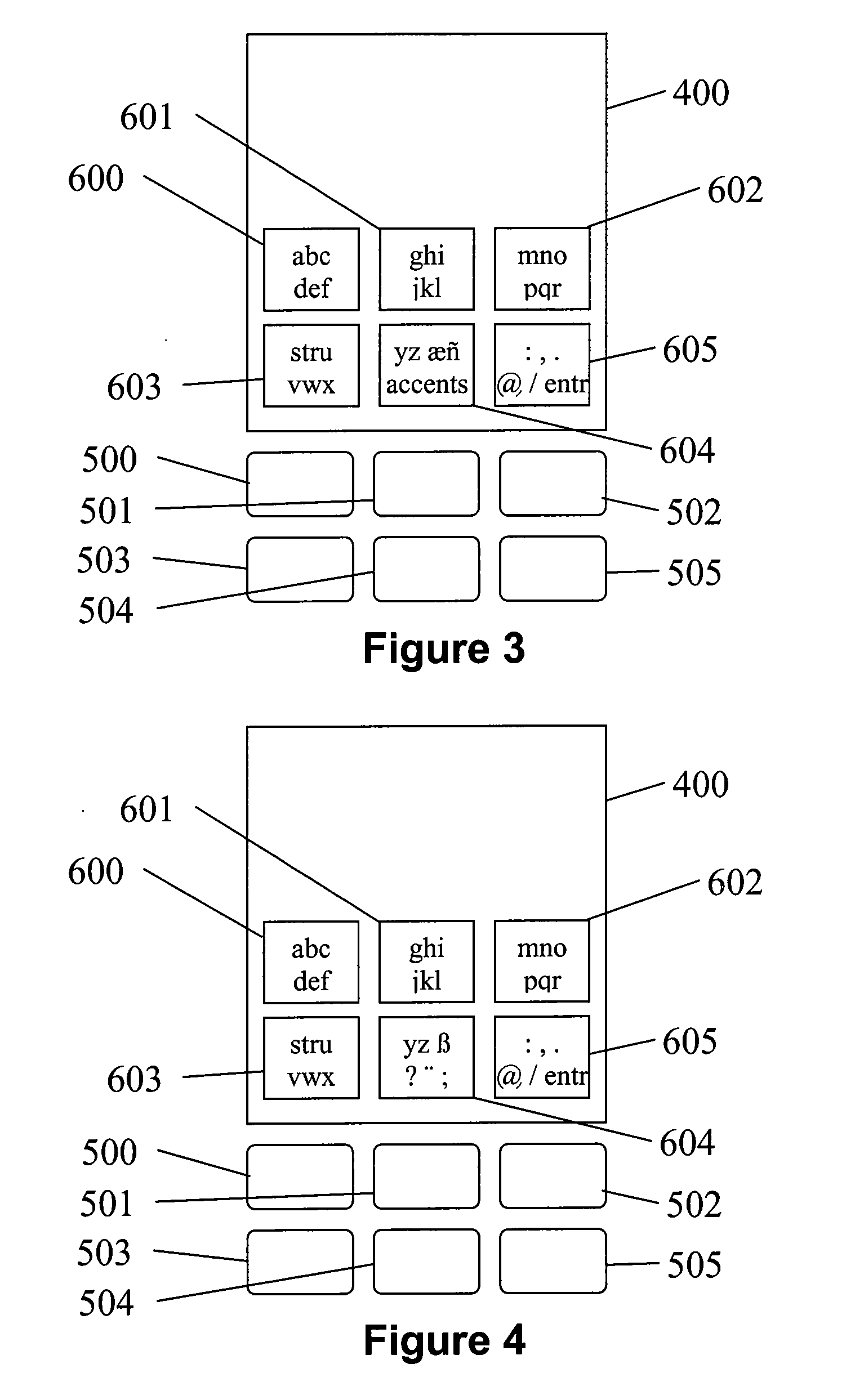Interactive Sequential Key System to Input Characters on Small Keypads
a sequential key and keypad technology, applied in the field of methods and apparatus to input characters, can solve the problems of finger obscurity, small keys on handheld devices, etc., and achieve the effects of easy learning, quick recognition and processing information, and identification of the location
- Summary
- Abstract
- Description
- Claims
- Application Information
AI Technical Summary
Benefits of technology
Problems solved by technology
Method used
Image
Examples
Embodiment Construction
[0032] This invention discloses an interactive sequential key system to input characters of many writing scripts. In a first embodiment, the invention comprises a device (such as a mobile phone, PDA, Ipod® device, or other device, especially those with limited keys for data entry) for receiving an input character from a user. The device includes a keypad comprising a plurality of keys arranged in rows and columns forming a keypad array (such as a cell phone keypad with 3 columns and 2-4 rows); a display (e.g., grayscale or color LCD) operable to display a graphical user interface which, in this embodiment, is represented as an onscreen array comprising a plurality of elements arranged in rows and columns, wherein each element of the onscreen array is coordinately mapped to a corresponding key in the keypad array. So, for example, if the onscreen array has 3 columns and 2 rows, the elements of the onscreen array are mapped to 3 columns and 2 rows of keys on the keypad having the same...
PUM
 Login to View More
Login to View More Abstract
Description
Claims
Application Information
 Login to View More
Login to View More - R&D
- Intellectual Property
- Life Sciences
- Materials
- Tech Scout
- Unparalleled Data Quality
- Higher Quality Content
- 60% Fewer Hallucinations
Browse by: Latest US Patents, China's latest patents, Technical Efficacy Thesaurus, Application Domain, Technology Topic, Popular Technical Reports.
© 2025 PatSnap. All rights reserved.Legal|Privacy policy|Modern Slavery Act Transparency Statement|Sitemap|About US| Contact US: help@patsnap.com



